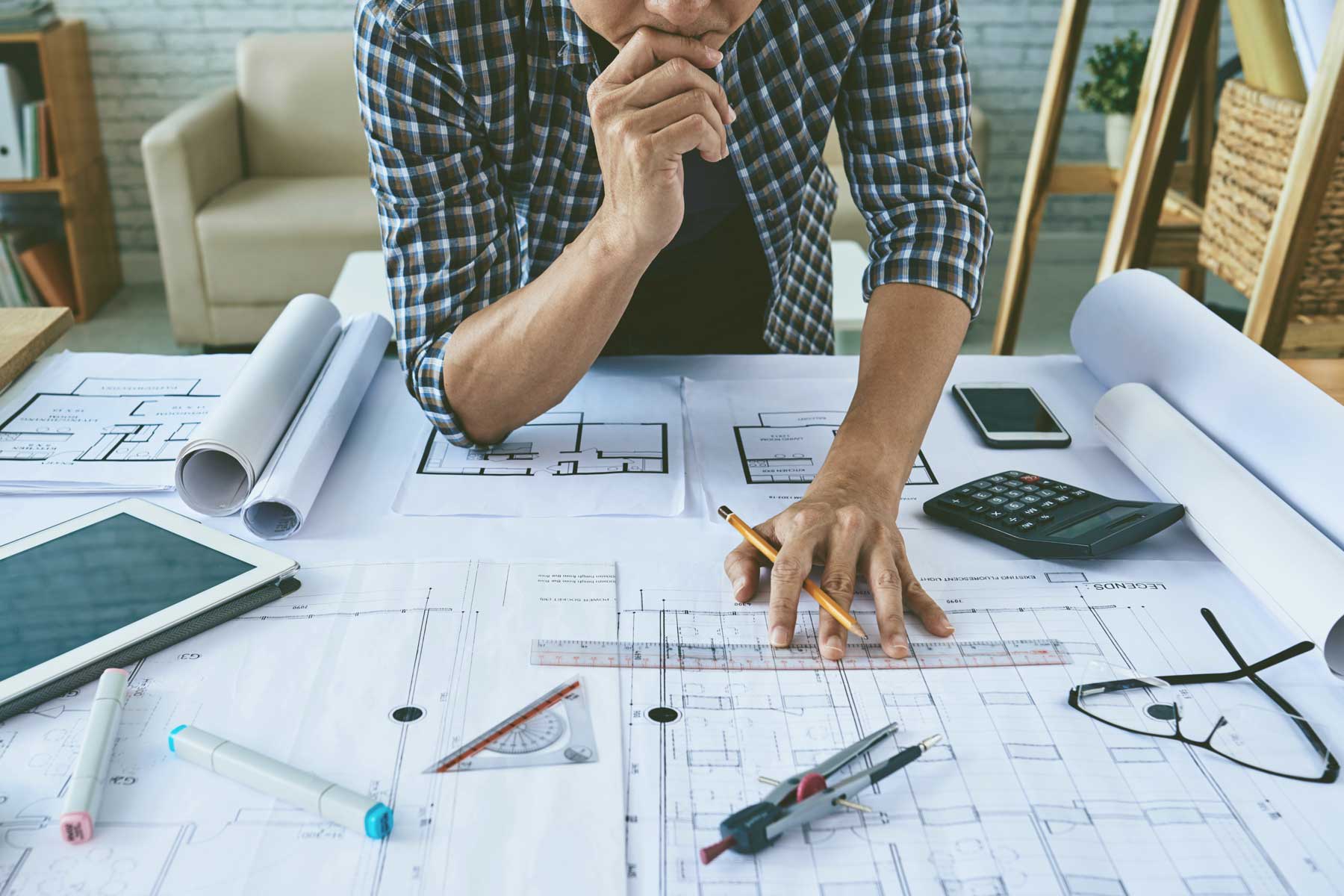Architect Marketing Strategies to Engage Luxury Clients
Architect Marketing Strategies to Engage Luxury Clients
Blog Article
Understanding the Diverse Career Paths Available for Aspiring Architect
As an ambitious Architect, you have a globe of occupation courses waiting for you. Whether you're attracted to standard architecture or the nuances of sustainable layout, there's a niche that lines up with your passions.
Traditional Architecture: Designing Structures and Frameworks
Standard style concentrates on making structures and frameworks that mix performance with aesthetic appeal. Your layouts can mirror cultural heritage, showcasing regional practices while satisfying modern needs.
You'll establish abilities in composing, model-making, and site analysis, enabling you to imagine and connect your ideas efficiently. Engaging with clients, you'll need to understand their vision and convert it into feasible layouts.
In addition, developing codes and sustainability practices are important in your work, ensuring your frameworks are risk-free and ecologically friendly. As you grow in your profession, you'll discover opportunities in domestic, commercial, and even repair jobs, each offering one-of-a-kind obstacles. Welcoming standard style leads the way for a meeting job that pays tribute to the past while forming the future.
Urban Preparation: Shaping Neighborhoods and Public Spaces
As a hopeful Architect, you can play an important role as a city coordinator, transforming exactly how communities operate and communicate. By using community involvement methods, you'll guarantee that homeowners have a voice fit their environment. And also, integrating lasting design concepts will help create areas that not just meet today's needs however also safeguard the future.
Role of Urban Planners
While several might believe of architects as the sole visionaries behind structures, metropolitan planners play an important role in shaping the broader landscape of neighborhoods and public areas. They analyze land usage, zoning laws, and community needs to create sustainable settings that improve top quality of life. By collaborating with different stakeholders, you'll aid design parks, transportation systems, and suburbs that advertise social communication and availability. Urban organizers also concentrate on environmental factors to consider, guaranteeing that growths integrate environment-friendly spaces and assistance biodiversity. Your knowledge in spatial design and area characteristics permits you to picture future development while protecting cultural heritage. In this essential function, you'll straight affect exactly how people experience their environments, making every project a chance for favorable modification.
Community Engagement Strategies
Efficient community engagement techniques are crucial for city planners to guarantee that the voices of locals are listened to and valued in the preparation procedure. To cultivate purposeful discussion, you should prioritize open forums and workshops where community members can express their ideas and worries. By proactively incorporating and listening comments, you'll create spaces that show the area's demands, inevitably leading to even more sustainable and effective metropolitan environments.
Sustainable Layout Concepts
When creating metropolitan spaces, including sustainable design principles is crucial for producing atmospheres that prosper both environmentally and socially. You ought to start by concentrating on power efficiency, utilizing materials that minimize waste and promote recycling. Take into consideration integrating environment-friendly spaces, like parks and yards, to boost biodiversity and enhance air high quality. Promoting walkability and public transport can lessen dependence on cars, fostering a much healthier neighborhood.
Creating with water preservation in mind is also key-- consider rainfall yards and permeable surfaces to take care of stormwater. Entailing area members throughout the preparation process warranties that the rooms you create satisfy their needs and urge social communication. By accepting these concepts, you'll contribute to vivid, sustainable city landscapes that profit everybody.

Landscape Design: Developing Lasting Exterior Environments
As you explore landscape design, you'll discover vital layout principles that create lovely and useful outdoor rooms. Lasting practices play a crucial role in making sure these settings prosper while reducing environmental impact. Plus, you'll find a variety of profession possibilities that allow you to make a genuine difference in how individuals interact with nature.
Layout Concepts in Landscape
Understanding style concepts in landscape style is vital for developing sustainable exterior environments that integrate with nature. You'll need to ponder aspects like range, equilibrium, and proportion to assure your layouts really feel natural and welcoming. In addition, pay focus to seasonal adjustments, making with products that enhance the environments year-round.
Lasting Practices Overview
Sustainable practices in landscape architecture not only focus on appearances but additionally focus on eco-friendly wellness and resource conservation. By incorporating indigenous plants, you improve biodiversity and decrease the requirement for chemical fertilizers and pesticides. Executing efficient irrigation systems assists save water and lessens overflow, shielding neighboring ecosystems. You can design spaces that promote dirt wellness, such as exercising and utilizing natural products permaculture principles. Additionally, incorporating eco-friendly framework, like rain yards and porous sidewalks, aids in stormwater management and lowers city heat. You contribute to a much healthier world and supply areas that foster area connection when you produce exterior atmospheres with sustainability in mind. Ultimately, these methods ensure your layouts profit both individuals and the setting for many years ahead.
Profession Opportunities Expedition
With a strong structure in lasting practices, landscape style offers a selection of job courses that enable you to make a significant effect on the atmosphere. Urban planners often team up with landscape designers to develop environment-friendly areas in urban setups, boosting city livability. If you're passionate concerning education, consider becoming a landscape design educator, inspiring future generations.
Lasting Design: Focusing on Eco-Friendly Practices
As you discover your career in design, embracing eco-friendly techniques can set you apart in an affordable area. Sustainable design concentrates on producing buildings that decrease ecological influence while boosting owner health. By including renewable products, energy-efficient systems, and lasting structure methods, you'll contribute to a greener future.
Begin by obtaining knowledge of environment-friendly certifications like LEED or BREEAM, which can boost your credentials. Think about just how natural light, ventilation, Recommended Reading and thermal efficiency can maximize style. Collaborate with designers and environmental professionals to introduce solutions that minimize waste and preserve resources.
Do not forget the significance of area participation-- interesting neighborhood stakeholders can inspire designs that harmonize with the atmosphere. As clients progressively focus on sustainability, your proficiency in environmentally friendly practices will not only attract projects but also satisfy your enthusiasm for accountable architecture. Embrace this vital facet of the career, and enjoy your occupation grow.
Historical Preservation: Safeguarding and Bring Back Cultural Heritage
While you commence on your building trip, take into consideration the crucial duty of historical conservation in preserving our cultural heritage. This field great post to read concentrates on the defense and reconstruction of substantial structures, sites, and structures that inform the tales of our past. By engaging in historic conservation, you'll aid secure the architectural legacy that forms area identity.
As a historic preservation Architect, you'll analyze historic relevance and evaluate the problem of structures. You'll function carefully with preservationists and historians to guarantee genuine remediation techniques are utilized. This career course enables you to blend creativity with study, allowing you to develop services that value original products and craftsmanship.
Your job not only adds to sustainability by recycling existing buildings yet also cultivates a sense of satisfaction within neighborhoods. Embracing this path will certainly help you end up being a guardian of background, maintaining the stories and visual appeals that enrich our lives.
Interior Design: Enhancing Indoor Spaces
Historical preservation and interior design both share a dedication to boosting the built atmosphere, yet they focus on different elements. While historical conservation stresses maintaining a structure's cultural and historic worth, interior architecture nos in on enhancing interior rooms for functionality and looks.
As an ambitious Architect, you'll find that interior architecture allows you to blend imagination with technological abilities. You'll make spaces that not only look great however additionally advertise comfort and efficiency. This area entails understanding just how light, color, and products interact within a space, impacting state of mind and usability.
You'll service different projects, from property homes to industrial workplaces, making sure that each environment meets the requirements of its passengers. By focusing on customer experience, you can change insides into functional and inspiring spaces, making a significant impact on exactly how individuals engage with their environments. Welcome the possibility to boost interior settings and form the means individuals live and work.
Industrial Design: Combining Capability With Visual Appeals
Commercial layout plays a necessary function in producing products that seamlessly blend looks with performance, guaranteeing that what you use day-to-day is not only visually attractive but additionally functional. As an aspiring Architect, you might immerse on your own in this field, concentrating on creating everything from furnishings to consumer electronic devices. Your job involves recognizing individual needs, products, and producing procedures, enabling you to develop ingenious solutions click resources that boost day-to-day experiences.
In commercial design, you'll frequently team up with producers, marketing experts, and engineers, making certain that your layouts are not only beautiful yet also viable. You'll discover to stabilize form and feature, prioritizing use without compromising style. By sharpening your skills in laying out, 3D modeling, and prototyping, you'll be fully equipped to bring your ideas to life. This profession course supplies a dynamic atmosphere where imagination fulfills usefulness, making it a rewarding choice for architects thinking about forming the items of tomorrow.
Regularly Asked Concerns
What Educational Credentials Do I Need to Come To Be a Designer?
To become an engineer, you'll need a professional level in design, typically a Bachelor's or Master's. Furthermore, you'll need to finish a teaching fellowship and pass the Architect Enrollment Evaluation to practice legitimately.
Are There Qualification Needs for Different Building Job Paths?
Yes, there're qualification demands for numerous architectural courses. Architect. You'll need to pass tests, complete teaching fellowships, and in some cases seek specialized training, depending upon your picked focus, like landscape style, urban style, or historical preservation
What Software Program Skills Are Crucial for Architects Today?

How Can I Gain Practical Experience While Studying Style?
You can acquire practical experience by interning at building firms, joining style competitors, volunteering for area jobs, or teaming up with classmates on real-world tasks. These opportunities improve your skills and develop valuable connections in the sector.
What Task Opportunities Exist Outdoors Conventional Style Firms?
You can explore different work opportunities outside standard architecture firms, like city planning, interior decoration, landscape architecture, building monitoring, property advancement, and even roles in sustainability consulting. Each offers special challenges and rewards.
Whether you're attracted to typical architecture or the nuances of lasting layout, there's a niche that lines up with your passions.When designing metropolitan areas, including lasting design principles is vital for developing environments that flourish both environmentally and socially.As you discover landscape architecture, you'll find necessary layout concepts that create gorgeous and practical outdoor spaces.Understanding style concepts in landscape style is essential for producing lasting outside settings that integrate with nature.In commercial design, you'll frequently work together with makers, designers, and marketing experts, making certain that your designs are not only attractive however likewise practical.
Report this page